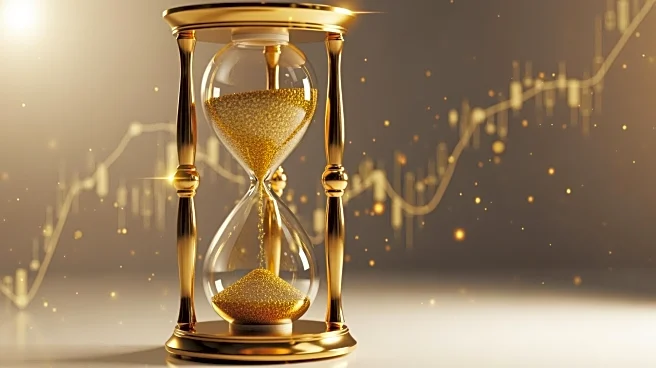What's Happening?
Gold prices have surged to unprecedented levels, nearing $4,400 per ounce, marking one of the most significant rallies in the precious metal's history. This increase, approximately $1,000 over a three-month period, unfolded in two phases. Initially, gold
advanced from $3,350 to $3,680, establishing a consolidation base. The second phase saw a more aggressive rise, with prices climbing over $700 in just 22 days. Technical analysis using Fibonacci retracement theory indicates significant market alignment, suggesting genuine market significance. The 61.8% Fibonacci retracement level, a critical ratio, is currently a support base for gold, indicating potential for further price increases.
Why It's Important?
The rise in gold prices reflects broader economic and geopolitical factors, including trade tensions, central bank gold accumulation, and concerns over fiat currency stability. This trend impacts various stakeholders, including investors seeking safe-haven assets and industries reliant on gold. The sustained high prices could influence monetary policy, particularly if the Federal Reserve considers further interest rate reductions. The rally also highlights the ongoing demand for gold as a hedge against economic instability, affecting global financial markets and investment strategies.
What's Next?
Gold is expected to continue its upward trajectory, provided the macroeconomic factors driving its appreciation remain unchanged. Analysts predict that the 61.8% Fibonacci retracement level will serve as a launching pad for further advances. Market behavior suggests a period of consolidation, allowing gold to stabilize before potentially challenging recent highs. Investors and market analysts will closely monitor geopolitical developments and central bank policies, which could influence future price movements.













